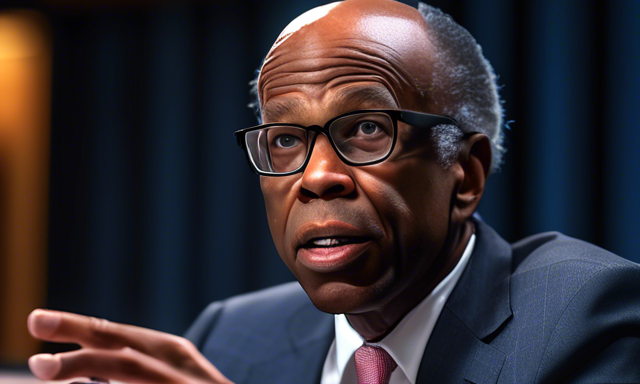Understanding the Impact of Economic Data on Rate Cut Decisions
When analyzing the recent GDP report, it is evident that the economy is robust, indicating resilience despite higher rates. While signs of weakness are emerging, such as lower-than-expected chain weighted price index numbers and labor market fluctuations, the overall economic picture remains positive. The Federal Reserve’s decision-making process is influenced by a multitude of factors, including incoming data and the pursuit of a soft landing for the economy. As speculations arise regarding potential rate cuts, it is crucial to assess the significance of economic indicators and their implications on monetary policy.
Assessing the Fed’s Stance on Rate Cuts
With discussions surrounding potential rate cuts in the upcoming months, it is essential to delve into the Federal Reserve’s approach towards monetary policy adjustments. While the recent GDP reading indicates a steady economic performance, concerns regarding a potential economic slowdown persist. The Fed’s cautious approach aims to avoid hasty decisions and ensure a smooth transition towards a more accommodative monetary policy. By strategically analyzing economic data, the Fed navigates the complex terrain of monetary policy adjustments to uphold economic stability and growth.
- Interpreting Economic Strength:
- The robust GDP report reflects the economy’s resilience amid challenging conditions.
- Higher rates have not significantly impacted economic performance, showcasing strength in various sectors.
- Considering Weakness Indicators:
- Lower-than-expected chain weighted price index numbers suggest emerging signs of weakness.
- Fluctuations in the labor market raise concerns about the economy’s stability and balance.
Anticipating Future Rate Cut Scenarios
As market speculations point towards potential rate cuts in the coming months, the timing and necessity of such adjustments remain under scrutiny. The Fed’s decision-making process hinges on a careful assessment of economic indicators and their implications on monetary policy. While a rate cut in September appears probable, the Fed’s wait-and-see approach emphasizes the importance of data-driven decision-making. Striking a balance between economic stability and growth, the Fed aims to address emerging challenges while upholding its dual mandate responsibilities.
Examining Political Considerations in Monetary Policy
Amidst the shifting landscape of the presidential election, questions arise regarding the Fed’s stance on political influences in its decision-making process. Upholding its commitment to the dual mandate, the Fed maintains a neutral stance towards political factors. Past instances of Fed officials succumbing to political pressures highlight the importance of staying above the fray and focusing on data-driven decision-making. By prioritizing economic indicators over political considerations, the Fed aims to maintain its credibility and independence in navigating monetary policy challenges.
Hot Take: Prioritizing Economic Resilience in Rate Cut Decisions
As the Federal Reserve assesses the implications of economic data on potential rate cuts, a balanced approach towards monetary policy adjustments is crucial. By prioritizing economic resilience and stability, the Fed aims to navigate the challenges posed by a dynamic economic landscape. Strategic decision-making based on incoming data and market dynamics will play a pivotal role in shaping future rate cut scenarios. As the Fed maintains its focus on its dual mandate objectives, the path towards a soft landing for the economy remains a key priority in the upcoming months.





 By
By
 By
By
 By
By

 By
By